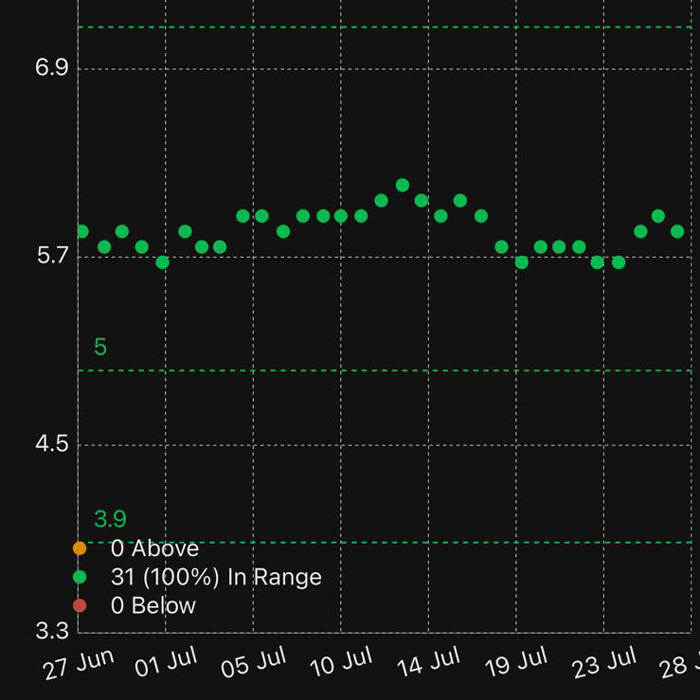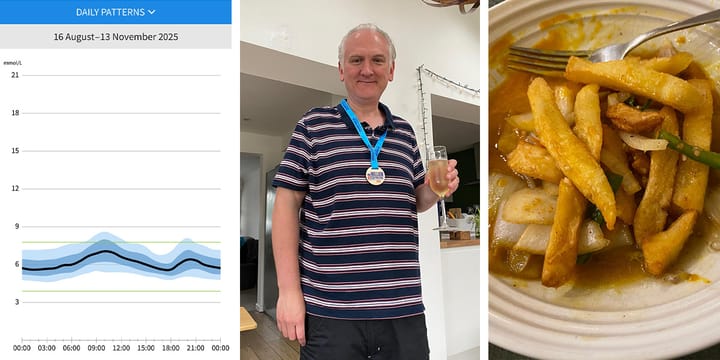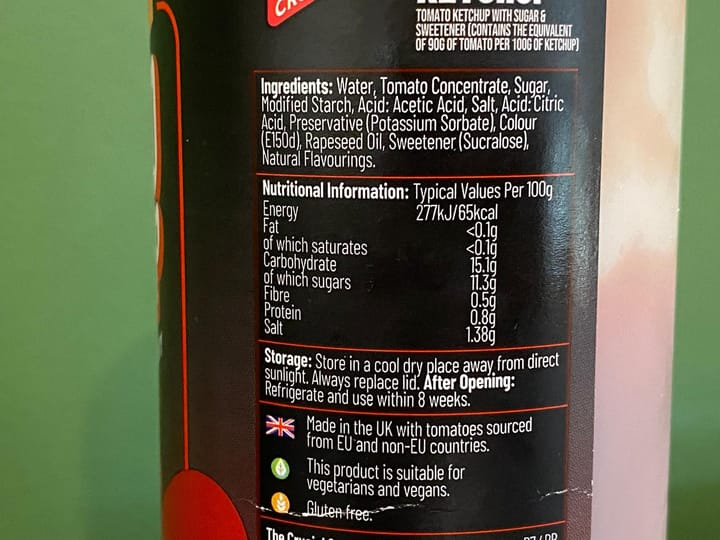How to boost BDNF and reduce insulin resistance
What I learned this week #8 looks at how to increase Brain-Derived Neurotrophic Factor (BDNF) and how this can reduce insulin resistance

What is BDNF?
Brain-Derived Neurotrophic Factor (BDNF) is a self-synthesised protein that improves the growth and creation (neurogenesis) of neurons in the brain. It is primarily created by the brain, some is created by muscles during aerobic or resistance exercise, and it can also be created by enothelial cells (blood vessel walls) under stress. Thanks to Dr. Mark Hyman for his Instagram post on BDNF for inspiring me to dive into this rabbit hole.
What has BDNF got to do with type 2 diabetes?
Although BDNF is primarily known for maintaining brain health, it also has an important influence on metabolism:
- Enhances insulin signalling which helps to reduce insulin resistance and increases glucose uptake by cells.
- Reduces appetite and increases energy expenditure
- Helps to preserve pancreatic β-cells. These are the cells needed to produce insulin, so this is possibly the most important point when considering BDNF levels for managing diabetes.
- Reduces inflammation and oxidative stress in the central nervous system, muscles and organs which helps to reduce insulin resistance.
- Boosts the formation and function of mitochondria. Mitochondria are the energy factories of cells, so improving their metabolic health increases their energy production efficiency and means that they can use up excess glucose and fatty acids more quickly.
General observations of BDNF levels show that they are lower in people with pre-diabetes or type 2 diabetes. Although that doesn't directly indicate that low BDNF levels cause type 2 diabetes, it's interesting to note that there is a correlation and it would make sense to make efforts to boost BDNF levels when looking at managing or reversing type 2 diabetes.
How to increase BDNF
Sleep
Having a regular sleep pattern, ideally around seven to nine hours per night, helps boost BDNF production because it is tightly regulated by the body’s circadian rhythm. Both REM and deep sleep are vital for processes that BDNF supports, including the growth of new neural connections and overall brain plasticity.
One of the best ways to improve sleep quality is to get outside early in the morning for exposure to natural sunlight. Morning light boosts serotonin production and helps synchronise the brain’s circadian clock, preparing it for the later evening rise in melatonin, which is activated by darkness. Melatonin production is inhibited by light so avoiding blue light before bedtime promotes melatonin release from the pineal gland, improving sleep quality and supports healthy BDNF levels.
Exercise
Aerobic exercise is very effective at boosting BDNF production. It increases tryptophan availability to the brain which it needs to produce BDNF. Walking for 30-45 minutes also helps to boost BDNF and can be more sustainable in keeping to a regular schedule. Combining a walk with sunshine first thing in the morning is a key strategy to boosting BDNF as well as supporting general mental and physical health. It's also more beneficial to walk in nature if possible as this has been shown to help boost serotonin and dopamine levels as well as reducing cortisol (the stress hormone). If you're having a bad day, try to get out for a walk near some trees and preferably away from any busy traffic. There's some interesting research suggesting that it could be the fractal patterns of nature that help to alleviate stress. Dr. Marc Berman discusses this on a recent Huberman Lab podcast.
Thinking
Cognitive challenges, especially learning a new skill, is a good way to boost BDNF production. It could be playing a musical instrument or learning a new language. It needs to be something challenging rather than procedural like Sudoku puzzles. Social interaction is also known to boost BDNF so joining a new club or meeting up with friends and family regularly can be beneficial.
Fasting
Intermittent fasting can help to increase BDNF production. Calorie restriction can also help. The main thing to aim for is no more than three meals per day.
Heat/Cold exposure
Temperature stress can help both BDNF production and general metabolism. Around 20 minutes of heat exposure can boost BDNF by up to 66%. Just a two minute cold shower can also help BDNF as well as improving metabolism.
Diet
Avoiding carbohydrate-heavy foods along with avoiding refined sugar and ultra processed food (UPF) are important to avoid sabotaging your efforts to increase BDNF.
Polyphenols should help to boost BDNF. Particularly helpful ones are in blueberries, green tea, dark chocolate, and turmeric (curcumin). It's important to add black pepper when trying to increase curcumin absorption from turmeric as piperine can increase its bioavailability by up to 2000%. It can also help to include fats with meals containing turmeric.
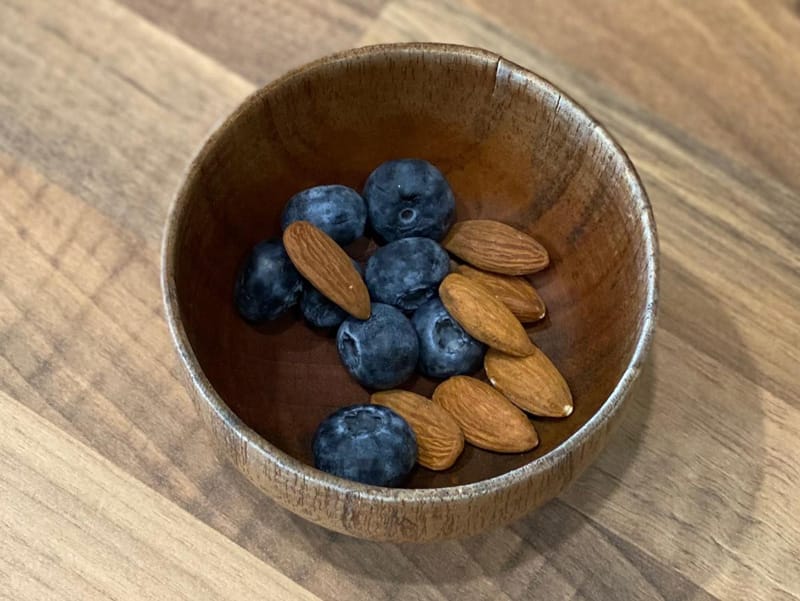
Omega-3 fatty acids also support BDNF production. DHA is especially beneficial and is found in fatty fish such as salmon, mackerel and sardines.
Lion's mane mushrooms have also been shown to increase BDNF levels although finding them can be a bit tricky.
Tryptophan is the essential amino acid required to produce serotonin and melatonin which regulate BDNF production so including foods such as chicken, turkey, nuts and full fat dairy (particularly cheese) will help to keep adequate raw materials needed for making BDNF.
Magnesium promotes metabolic pathways that increase BDNF gene expression. It also appears to promote neurogenesis and increase BDNF in the hippocampus. It reduces cortisol levels which inhibit BDNF production, as well as helping to regulate ATP energy production. Nuts and seeds are excellent sources of magnesium. Pumpkin, chia, sesame and sunflower seeds contain the highest levels, with almonds, brazil and cashew nuts not far behind. Dark chocolate is also a good source.
Vitamin B6 enhances serotonin, dopamine, and melatonin synthesis, which are precursors to BDNF. It lowers homocysteine which suppresses BDNF production. It also reduces inflammation and oxidative stress which helps to maintain healthy BDNF levels and brain function. Meat and nuts are great sources of vitamin B6, chicken and turkey are good options along with fatty fish. For nuts, sunflower seeds and pistachios hit highest. Chickpeas are also a good source as well as bananas and fortified cereals (although I don't generally recommend bananas and breakfast cereal if you want to keep blood glucose levels down).
Folate activates genes involved in the production of BDNF. It also enhances serotonin, dopamine, and norepinephrine synthesis and lowers homocysteine. Having adequate folate levels is generally associated with better cognitive function and helps to maintain mental health. Sunflower seeds, lentils, chickpeas and black beans are excellent sources of folate. Beef liver is even better (if your palate can accommodate it). Dark green veggies such as spinach, kale, asparagus and broccoli are also good sources. Fortified cereals again may help if you don't have blood glucose control issues.
Iron is essential for the conversion of tryptophen to serotonin. It is also vital for mitochondrial energy production and low iron levels are associated with lower BDNF. Clams and oysters are probably the best sources of iron. Beef and chicken liver are good, if you can manage those. Pumpkin seeds and dark chocolate are especially rich sources of iron. Beef, lentils, chickpeas and spinach are also good options.
BDNF-boosting tea recipe
I've been experimenting with different ingredients for my locally foraged tea recipes. They're good for fasting days as the leaves don't contribute to calorie intake so I consider them okay for not breaking a fast. They also have the benefit of not containing caffeine so I can have them before and after breakfast. I initially looked at this from a motivation of boosting electrolytes so this recipe will help with replenishing those as well if you're looking to top them up around exercise or fasting.
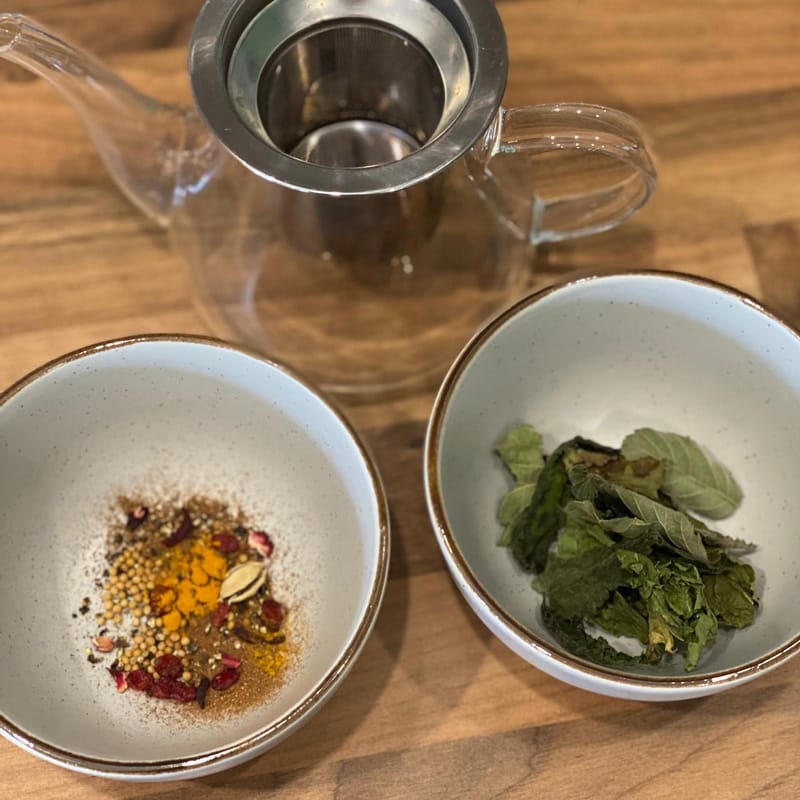
Approximate measures below - play around with different amounts to see what ratios of flavours you enjoy the most. You can dry foraged leaves in a dark room on some kitchen towel - avoid any damp areas to avoid mould forming. I go for a 1:1:1 ratio on the leaves in terms of volume. I find the mustard seeds add a bit of body to balance the general earthy flavour from the leaves. Start with very small amounts of the spices and increase according to taste. Stew everything in hot water for about seven minutes, stirring at the begining and end of brewing.
- 6 nettle leaves
- 4 blackberry leaves (raspberry leaves work just as well)
- approx same volume of dandelion leaves
- 6 dried barberries
- 1 crushed green cardamon pod
- pinch of mustard seeds
- pinch of dried hibiscus (adds sweetness)
- pinch of cinnamon powder (you could grate whole cinnamon)
- pinch of dried or fresh rosemary (missed this one on the photo)
- tiny pinch of turmeric powder
- tiny pinch of black pepper

My new BDNF-boosting to-do list
I've put together some goals for next week to try to boost my BDNF levels. Use this list to get some ideas but don't feel the need to include everything. Consistency is the most important thing to aim for so set some realistic goals to get started.
Sleep
I don't normally stay up late but I'm going to attempt a more regular bed time of 9pm with the hope that I'll be asleep by 10pm. That should give me an ideal eight hours of sleep before waking up at 6am.
I'm also going to do more on avoiding screens and blue light after 8pm. I have night shift mode scheduled on my phone to switch to a darker red light option after 7pm. I like to listen to audio books to help me fall asleep so I'm going to try sleeping without them.
Wednesday night is chess night at the pub so I don't normally get home until 10.30-11pm so that's going to be an exception as I want to keep up the general thinking exercises.
Exercise
My new weight-training routine has been Monday, Wednesday and Friday mornings which I'll continue with but will also look to add in cycling or spin at the gym for 20 minutes as aerobic activity helps to boost BDNF. I just about managed 12 minutes this week so need to work on increasing my cardio work. I'm not looking to overdo it; I just need to reach 150 beats per minute and get a bit sweaty at least three times a week.
After struggling with peroneal tendonitis (swollen tendons on the outside of the foot) last week, I'm hoping to get back to around 14,000+ steps per day.
Thinking
Cognitive challenge is important for boosting BDNF so I'm going to get back into the habit of playing daily on my chess app as well as chess night and my usual diabetes research and writing. I'm going to start on a new book as I recently finished Good Energy by Dr. Casey Means and Your Body's Many Cries for Water by Dr. Batmanghelidj (both excellent). Incorporating new routes into my walks will also help add to my cognitive challenge tasks.
Fasting
My general fasting routine is a bit haphazard - which is generally fine - that can be a good thing for weight loss, but I'm going to focus on meeting a 14:10 fast for most days next week which will mean only eating breakfast after 9am and nothing after 7pm to hit a 14 hour overnight fast. The evenings are going to be difficult as getting an evening meal prepped, cooked and eaten before 8pm is already challenging. Chess night will throw me off as I usually don't get back home until 10.30pm so I'm allowing an exception for that.
I'm not going to focus on calorie restriction as I don't want to lower my basal metabolic rate as that will make it harder to lose weight. I find eating less on alternate days or missing a meal out is easy to do without feeling too hungry.
Heat/Cold exposure
I regularly have hot baths for about 20 minutes anyway so I'll make sure to have these daily. Unfortunately, my mixing tap is broken and adjusting water temperature is almost impossible so I'm probably going to have to skip the cold showers. I'll have a think about other alternatives.
Diet
More of the same really... nuts, berries, protein... I'm going to go get some more wild blackberries as they are more astringent than supermarket ones, so most likely to be packing more polyphenols. I'll continue with my natto routine and have dark chocolate on most days.
I'm going to focus on having more pumpkin, sunflower, chia and flax seeds and blueberries.
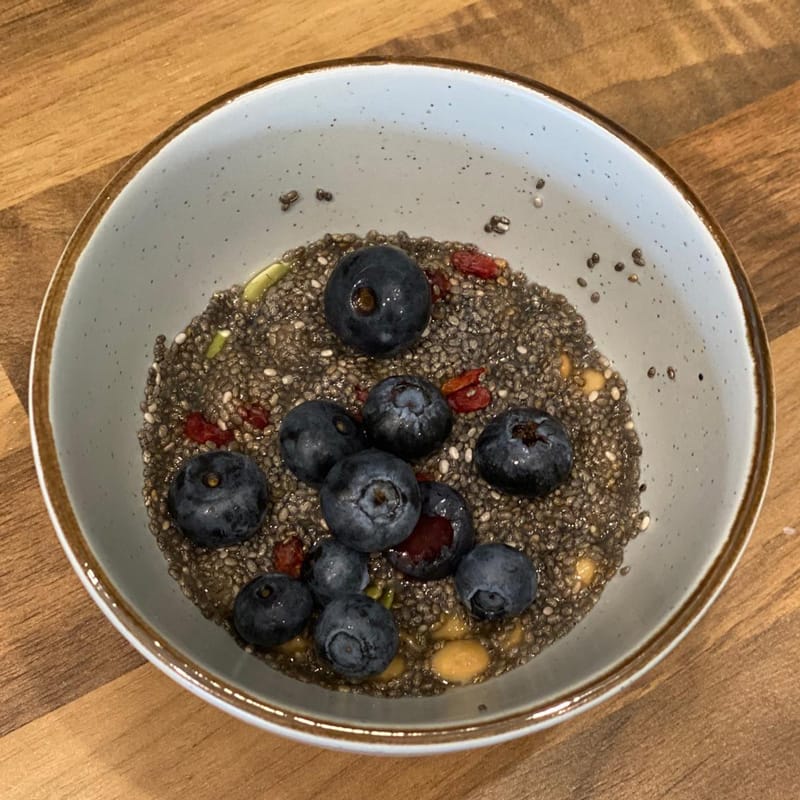
Drinking green tea in the afternoon (caffeine can temporarily increase insulin resistance so I will avoid it around breakfast time).
I'll try to have fish at least three times during the week to boost DHA. One food I am fussy with is fish and I struggle with fatty fish such as salmon. I might have a look at algae oil supplements.
I struggle to find lion's mane mushrooms in supermarkets so I've got my own grow bag to try out. It might be a while before I'm able to harvest any.
Alcohol
Alcohol is going to be a big drawback in attempting to boost BDNF, so I'm going to stick to my 2 night a week regime with keeping Tuesday/Wednesday and Friday/Saturday as options. I'm also going to stick to red wine as that contains resveratrol which can also help to boost BDNF (in much better moderation than I usually manage). My weekly average is around 55 units per week, so I'm setting a goal of 35 units maximum.
Goals
It's not easy to measure BDNF levels directly but my 7-day average glucose levels gives me an indication of how things are going. If I can maintain 5.7 or get to 5.6 mmol/L by the end of the week that will be a likely sign of BDNF being boosted. Longer term, if my inflammation (hs-CRP) blood test results come down further from 0.81 mg/L (an hs-CRP of below 1 mg/L is considered low risk for cardiovascular disease but optimal is below 0.3).
